Top Rankings
North Andover School District ranks among the top 20% of public school district in Massachusetts for:
Category
Attribute
Math Proficiency
Highest math proficiency (Top 20%)
Graduation Rate
Highest graduation rate (Top 5%)
Community Size
Largest student body (number of students) (Top 1%)
For the 2025 school year, there is 1 public preschool serving 413 students in North Andover School District.
Public Preschools in North Andover School District have a diversity score of 0.50, which is less than the Massachusetts public preschool average of 0.68.
Minority enrollment is 32% of the student body (majority Hispanic), which is less than the Massachusetts public preschool average of 53% (majority Hispanic).
Overview
This School District
This State (MA)
# Schools
8 Schools
567 Schools
# Students
4,463 Students
205,303 Students
# Teachers
336 Teachers
17,796 Teachers
Student : Teacher Ratio
13:1
13:1
District Rank
North Andover School District, which is ranked within the top 30% of all 393 school districts in Massachusetts (based off of combined math and reading proficiency testing data) for the 2021-2022 school year.
The school district's graduation rate of 98% has increased from 96% over five school years.
Overall District Rank
#102 out of 397 school districts
(Top 30%)
(Top 30%)
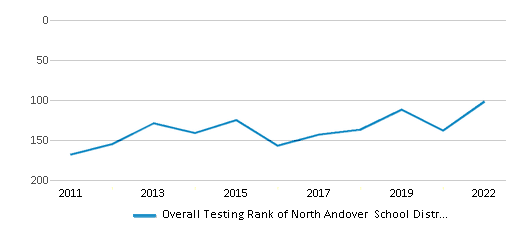
Math Test Scores (% Proficient)
57%
41%

Reading/Language Arts Test Scores (% Proficient)
52%
44%
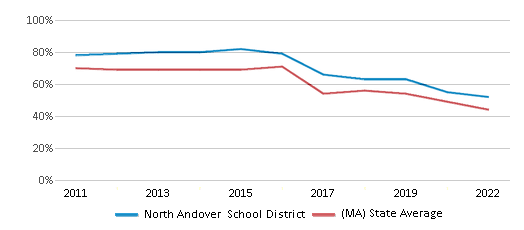
Science Test Scores (% Proficient)
58%
44%
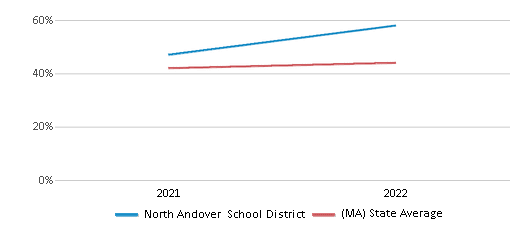
Graduation Rate
98%
90%
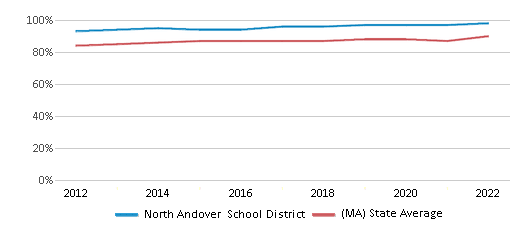
Students by Ethnicity:
Diversity Score
0.49
0.68
# American Indian Students
6 Students
495 Students
% American Indian Students
n/a
n/a
# Asian Students
320 Students
11,779 Students
% Asian Students
7%
6%
# Hispanic Students
711 Students
61,622 Students
% Hispanic Students
16%
30%
# Black Students
140 Students
25,280 Students
% Black Students
3%
12%
# White Students
3,110 Students
95,698 Students
% White Students
70%
47%
# Hawaiian Students
2 Students
173 Students
% Hawaiian Students
n/a
n/a
# Two or more races Students
166 Students
10,168 Students
% of Two or more races Students
4%
5%
Students by Grade:
# Students in PK Grade:
126
31,316
# Students in K Grade:
287
33,369
# Students in 1st Grade:
318
30,795
# Students in 2nd Grade:
312
28,908
# Students in 3rd Grade:
320
23,512
# Students in 4th Grade:
338
22,524
# Students in 5th Grade:
365
18,693
# Students in 6th Grade:
344
7,489
# Students in 7th Grade:
332
3,111
# Students in 8th Grade:
341
3,363
# Students in 9th Grade:
358
606
# Students in 10th Grade:
347
525
# Students in 11th Grade:
331
528
# Students in 12th Grade:
344
485
# Ungraded Students:
-
79
District Revenue and Spending
The revenue/student of $19,011 in this school district is less than the state median of $23,845. The school district revenue/student has stayed relatively flat over four school years.
The school district's spending/student of $18,769 is less than the state median of $24,602. The school district spending/student has stayed relatively flat over four school years.
Total Revenue
$85 MM
$21,850 MM
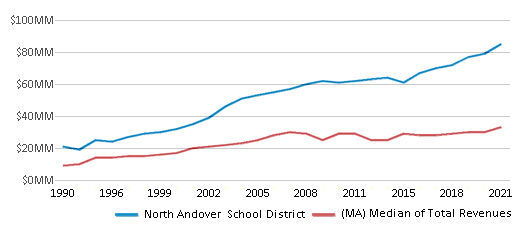
Spending
$84 MM
$22,544 MM
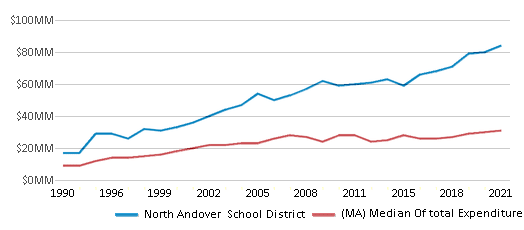
Revenue / Student
$19,011
$23,845
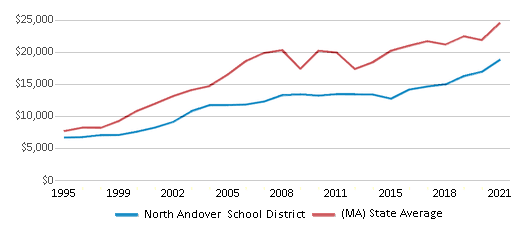
Spending / Student
$18,769
$24,602
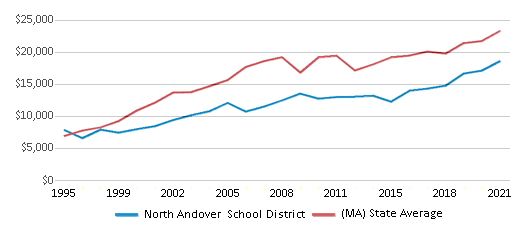
Best North Andover School District Public Preschools (2025)
School
(Math and Reading Proficiency)
(Math and Reading Proficiency)
Location
Grades
Students
Rank: n/an/a
115 Phillips Brooks Road
North Andover, MA 01845
(978) 794-1577
North Andover, MA 01845
(978) 794-1577
Grades: PK-K
| 413 students
Recent Articles

Year-Round Or Traditional Schedule?
Which is more appropriate for your child? A year-round attendance schedule or traditional schedule? We look at the pros and cons.

Why You Should Encourage Your Child to Join a Sports Team
Participating in team sports has a great many benefits for children, there is no doubt. In this article you will learn what those benefits are.

White Students are Now the Minority in U.S. Public Schools
Increasing birth rates among immigrant families from Asia and Central and South America, combined with lower birth rates among white families, means that for the first time in history, public school students in the United States are majority-minority. This shift in demographics poses difficulties for schools as they work to accommodate children of varying language abilities and socio-economic backgrounds.





